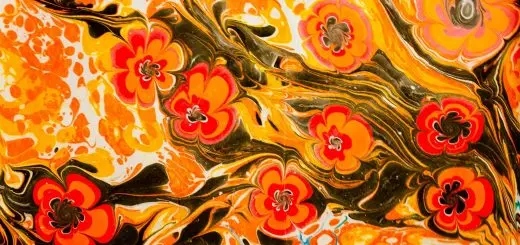Low Light Flowering Houseplants

Looking for more amazing products? Check out our online store and explore our collection here! Happy shopping!
Before diving in, please note: This post is for informational purposes only. If you’d like to know more about how we approach topics, feel free to check out our friendly Disclaimer Page.
Hey there, amazing readers! 
We’re committed to delivering quality posts, and your support (even just sticking around despite the ads) means everything to us. So, bear with us, and thanks for helping us keep the good vibes rolling. Now, on to the fun stuff!
TRANSLATE BUTTON AT THE END OF THE ARTICLE
Low Light Flowering Houseplants: A Comprehensive Guide
Houseplants bring life and vibrancy to any indoor space, but not all plants thrive in low light conditions.
For those seeking to brighten up a dimly lit room with flowering plants, it’s essential to choose the right varieties that can flourish with minimal sunlight.
Low light flowering houseplants are a perfect choice for individuals living in apartments or homes with limited access to natural light.
This comprehensive guide will explore the importance of low light conditions, the top 5 low light flowering houseplants to consider, caring tips, propagation techniques, common mistakes to avoid, and how to incorporate these plants into your home decor.
Understanding the Importance of Low Light Conditions
Low light conditions refer to areas in your home that receive minimal direct sunlight.
While some plants require ample sunlight to thrive, low light flowering houseplants have adapted to survive in environments with limited light exposure.
Understanding the importance of low light conditions is crucial in selecting the right plants that can thrive in these settings.
By choosing plants that are well-suited for low light, you can ensure they will grow and bloom beautifully without the need for constant sunlight.
Top 5 Low Light Flowering Houseplants for Your Home
Peace Lily (Spathiphyllum): Known for its elegant white flowers, the Peace Lily is a popular choice for low light environments.
This plant thrives in indirect sunlight and only requires occasional watering.
African Violet (Saintpaulia): With its vibrant purple, pink, or white flowers, the African Violet is a stunning addition to any indoor space.
This plant prefers low light conditions and thrives in well-draining soil.
Spider Plant (Chlorophytum comosum): The Spider Plant is a resilient houseplant that produces small white flowers.
It can adapt to low light conditions and is easy to care for, making it perfect for beginners.
Anthurium (Anthurium andreanum): With its glossy, heart-shaped flowers, the Anthurium adds a touch of elegance to any room.
This plant can bloom in low light and requires regular watering to thrive.
Begonia (Begonia x semperflorens-cultorum): Begonias come in various colors and produce delicate flowers throughout the year.
These plants prefer indirect light and moderate humidity to flourish.
Tips for Caring for Low Light Flowering Houseplants
Watering: Low light plants generally require less water than those in brighter conditions.
Ensure the soil is dry before watering to prevent root rot.
Humidity: Low light plants may benefit from increased humidity levels.
You can mist the leaves or place a humidifier near your plants.
Fertilizing: Use a balanced houseplant fertilizer at half strength every 4-6 weeks during the growing season to provide essential nutrients.
Pruning: Regularly remove dead or yellowing leaves to promote growth and prevent diseases.
Repotting: Check the roots of your plants annually and repot them if they become root-bound to ensure healthy growth.
Common Mistakes to Avoid when Growing Indoor Plants
Overwatering: One of the most common mistakes is overwatering your plants, which can lead to root rot.
Always check the soil moisture before watering.
Lack of drainage: Ensure your pots have drainage holes to allow excess water to escape, preventing waterlogged soil.
Ignoring pests: Keep an eye out for common indoor plant pests like spider mites or mealybugs and treat them promptly to avoid infestations.
Using cold water: Avoid using cold water on your plants, as it can shock their roots.
Opt for room temperature water when watering.
Choosing the wrong plant: Not all plants can thrive in low light conditions, so be sure to research and select varieties that are suited for your home environment.
Benefits of Adding Flowering Plants to Your Home Decor
Incorporating flowering plants into your home decor offers numerous benefits beyond aesthetics.
Plants have been shown to improve air quality, reduce stress levels, boost mood, and increase productivity.
Flowering plants add a pop of color and freshness to any room, creating a welcoming and vibrant atmosphere.
Additionally, caring for plants can be a therapeutic and rewarding experience, providing a sense of accomplishment and connection to nature.
How to Create the Ideal Environment for Low Light Plants
To create the ideal environment for low light plants to thrive, consider the following factors:
Light exposure: Place your plants in areas with indirect sunlight or artificial light sources like grow lights.
Temperature: Most low light plants prefer temperatures between 60-75°F (15-24°C) and should be kept away from drafts or heat sources.
Humidity: Maintain moderate humidity levels by misting your plants or using a humidity tray to prevent dry air.
Soil: Use well-draining potting mix to prevent waterlogging and ensure proper root aeration.
Air circulation: Ensure good air circulation around your plants to prevent stagnant air and promote healthy growth.
The Best Placement for Low Light Flowering Houseplants
When determining the best placement for your low light flowering houseplants, consider the following tips:
North-facing windows: Plants placed near north-facing windows receive gentle, indirect sunlight throughout the day.
Bright corners: Utilize bright corners in your home for plants that require slightly more light, such as African Violets.
Artificial light: Supplement natural light with artificial grow lights to ensure your plants receive adequate light for blooming.
Shelving: Create vertical gardens by placing your plants on shelves or hanging them from macrame plant hangers to maximize space.
Propagation Techniques for Low Light Flowering Plants
Propagation is an excellent way to expand your collection of low light flowering plants and share them with friends and family.
Here are some propagation techniques to try:
Division: Divide mature plants into smaller sections with roots to create new plants.
Stem cuttings: Snip a healthy stem from your plant, remove lower leaves, and place it in water or soil to encourage root growth.
Leaf cuttings: Take a healthy leaf from your plant, let it dry for a few hours, and place it in moist soil to develop roots.
Offsets: Some plants produce offsets or baby plants that can be removed and potted separately to grow into mature plants.
Troubleshooting Common Issues with Indoor Flowering Plants
If you encounter problems with your indoor flowering plants, consider the following solutions:
Yellowing leaves: Yellow leaves may indicate overwatering, nutrient deficiency, or pests.
Adjust your watering schedule and fertilize your plants if needed.
Drooping stems: Wilting or drooping stems can be a sign of underwatering or root rot.
Check the soil moisture and adjust your watering routine accordingly.
Brown spots on leaves: Brown spots may be caused by fungal diseases, pests, or sunburn.
Remove affected leaves, treat the plant with fungicide if necessary, and adjust its light exposure.
Incorporating Low Light Flowering Houseplants into Your Interior Design
Adding low light flowering houseplants to your interior design can enhance the aesthetic appeal of your home while providing numerous health benefits.
Consider the following tips for incorporating plants into your decor:
Grouping plants: Create clusters of plants in varying heights and textures to add visual interest to your space.
Choosing decorative pots: Select decorative pots or planters that complement your decor style and add a touch of elegance to your plants.
Hanging plants: Install plant hangers or wall-mounted planters to showcase trailing plants like Spider Plants or Pothos.
Seasonal displays: Rotate your plants throughout the year to showcase different blooming varieties and add seasonal flair to your home.
Enhancing Your Well-being with Low Light Flowering Plants
Low light flowering plants not only add beauty to your home but also contribute to your overall well-being.
Studies have shown that indoor plants can reduce stress, improve air quality, and promote relaxation.
By caring for flowering plants in your home, you can create a peaceful sanctuary that fosters a sense of calm and tranquility.
Take the time to nurture your plants, observe their growth and blooming cycles, and reap the benefits of a greener and more vibrant living space.
Conclusion
In conclusion, low light flowering houseplants offer a wonderful opportunity to bring nature indoors and brighten up any space with their colorful blooms.
By understanding the importance of low light conditions, selecting the right plants, and providing proper care, you can create a thriving indoor garden that enhances your home decor and well-being.
Remember to avoid common mistakes, implement propagation techniques, troubleshoot issues promptly, and incorporate plants into your interior design to maximize their benefits.
With a little care and attention, your low light flowering houseplants will flourish and bring joy and vitality to your home for years to come.

The Enlightenment Journey is a remarkable collection of writings authored by a distinguished group of experts in the fields of spirituality, new age, and esoteric knowledge.
This anthology features a diverse assembly of well-experienced authors who bring their profound insights and credible perspectives to the forefront.
Each contributor possesses a wealth of knowledge and wisdom, making them authorities in their respective domains.
Together, they offer readers a transformative journey into the realms of spiritual growth, self-discovery, and esoteric enlightenment.
The Enlightenment Journey is a testament to the collective expertise of these luminaries, providing readers with a rich tapestry of ideas and information to illuminate their spiritual path.
Our Diverse Expertise
While our primary focus is on spirituality and esotericism, we are equally passionate about exploring a wide range of other topics and niches 

To ensure we provide the most accurate and valuable insights, we collaborate with trusted experts in their respective domains 
Our blog originally focused on spirituality and metaphysics, but we’ve since expanded to cover a wide range of niches. Don’t worry—we continue to publish a lot of articles on spirituality! Frequently visit our blog to explore our diverse content and stay tuned for more insightful reads.
Hey there, amazing reader! 
Check out our store here and take a peek at some of our featured products below! Thanks for being awesome!










